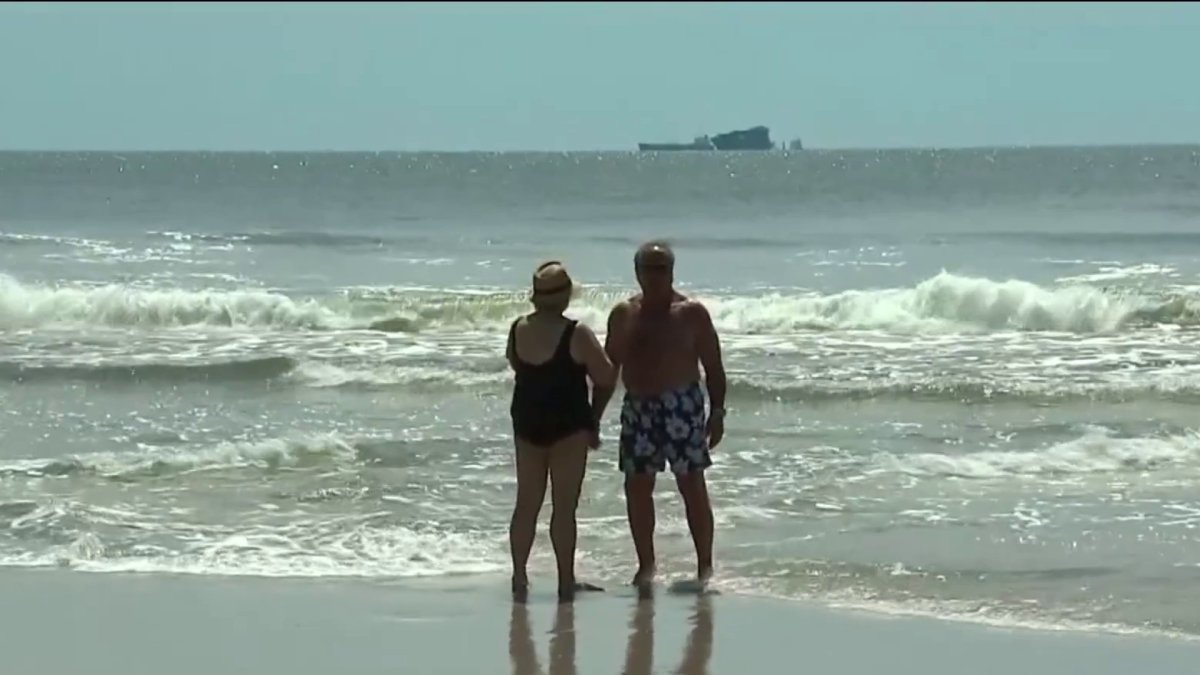
Hurricane Franklin in the Atlantic is causing some dangerous rip currents for New York beachgoers. Melissa Colorado reporting.
New York Gov. Kathy Hochul ordered State Parks to suspend swimming at Long Island's ocean beaches due to flooding and strong surf conditions resulting from Hurricane Franklin.
"As peak hurricane season approaches, the safety of all New Yorkers remains my top priority," Hochul said Wednesday. "As tropical storms and hurricanes affect our beaches on Long Island, we are taking proactive steps to protect New Yorkers and I urge everyone to remain vigilant."
Restrictions are expected to be in place at Robert Moses, Hither Hills and Jones Beach State Parks while adverse conditions persist. All three ocean beaches experienced significant water levels Wednesday, including flooding at Jones Beach and impassable areas at Robert Moses and Hither Hills.
Videos from Jones Beach Theater showed concertgoers Wednesday night standing in about a foot or so of floodwaters as they watched Smashing Pumpkins and Interpol perform. The high water levels were a result of the super blue moon that captivated stargazers around the world.
Get Tri-state area news and weather forecasts to your inbox. Sign up for NBC New York newsletters.
The three state parks posted red flags on the beach to warn visitors that swimming is prohibited. Those restrictions are expected to remain in place through Friday, putting a damper on possible beach plans to kick off the last weekend of summer. Lifeguards remain on duty to prevent anyone from entering the water.
Swimming is still available at Sunken Meadow and Wildwood State Parks on Long Island Sound, which are not experiencing dangerous impacts from the storm. The New York State Office of Parks, Recreation and Historic Preservation will continue to monitor conditions at all state parks.
"Even far away, hurricanes and tropical storms are powerful events that cause dangerous and unpredictable conditions on our swimming beaches," said New York State Parks Commissioner Erik Kulleseid. "We urge all park visitors to take these events seriously and follow all instructions from our lifeguards and park staff."
News
In addition to the high rip current risk, there is also a high surf advisory. On the south shore of Long Island, high swells from Franklin could caused breaking waves of six to eight feet in the surf zone, leading to dangerous conditions for swimming and surfing, while possibly contributing to beach erosion as well.
The best advice is to stay out of the water as the high rip current remains. Those who do venture into the surf should stay as close to the shore and the lifeguard as possible, and use a floatation device. Anyone caught in a rip current should swim parallel to the shore to escape it.
Although the Atlantic hurricane season began in June, the threat of tropical storms impacting New York State is traditionally greatest in the months of September and October. The National Oceanic and Atmospheric Administration (NOAA) recently increased its forecast for the 2023 Atlantic hurricane season from a “near normal” level of activity to an “above normal” level of activity. In August, NOAA forecasters predicted a total of 14 to 21 named storms during the 2023 Atlantic hurricane season.